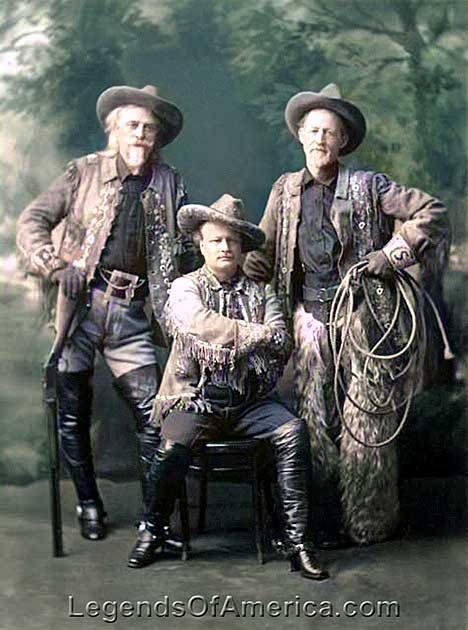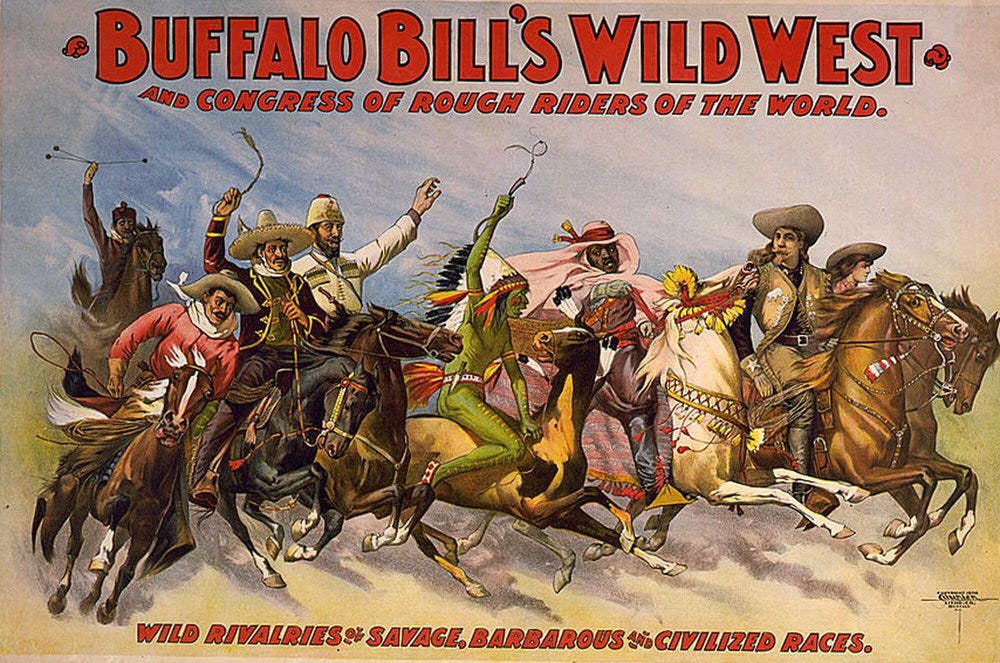Buffalo Bill Cody's Wild West Show Thrilled Audiences with Scenes of a Bygone Era
From Pony Express rider to buffalo hunter, Buffalo Bill Cody took his life of adventure and created a drama-filled with outlaws, sharp shooters and fragments of the American West
Background
In the waning years of the Wild West, crowds of spectators were treated to traveling shows featuring demonstrations of shooting, horse riding, and reenactments of famous battles or gunfights.
Many of the participants were, by then, household names akin to modern celebrities. Names like Annie Oakley and Chief Sitting Bull conjured images of a past where freedom, adventure, and possibility lay just beyond the horizon.
The most successful of these shows was started by a well-known cowboy and scout named Buffalo Bill Cody.
Early Years
For a name that would become one of the most well-known of the Wild West, Buffalo Bill Cody slipped into the world with little fanfare on February 26, 1846, in Scott County, Iowa.
Little is written about his mother, but William F. Cody, better known as Buffalo Bill, came by his impressive genes honestly. His father, Issac Cody, was a vehement antislavery opponent.
A few years after Bill’s birth, Issac moved the family from a farm near LeClaire, Iowa, to Kansas. There, he operated a trading post near the Kickapoo Indian Agency. At the time, Kansas was known as Bleeding Kansas for all the violence between slave owners and abolitionists.
In 1854, while giving an antislavery speech, Issac Cody was stabbed and would die from his wounds three years later. William Cody was nine years old when he set out to support his family.
He first began working for the freight company Russell, Majors, and Waddell, where he learned his much-acclaimed skills as a horseman. By age 14, Cody began riding for the famous mail service, the Pony Express.
Some of the Pony Express and Cody’s exploits were dramatized by dime novels, but facts prove Cody did show courage and dedication to the job. He once rode over 300 miles - 22 continuous hours - to complete his trip.
Rise to Fame
During the Civil War, Cody served as a Union scout, and in 1863, he enlisted with the Seventh Kansas Cavalry. After the war, he turned his attention to buffalo hunting to feed construction crews of the Union Pacific Railroad. He became known as the champion buffalo hunter of the Great Plains.
He was soon in demand as a scout and hunter, earning the nickname “Buffalo Bill.”
Cody’s daring exploits caught the attention of newspapers and an ambitious dime novel writer, Ned Buntline. Buntline fictionalized Cody’s adventures, turning him into one of the world’s first global celebrities.
In 1872, Buntline wrote a drama called The Scouts of the Prairie and persuaded Cody to star in the show.
While he might have excelled as a scout, Cody was no actor, and it showed. Reviews were terrible, but the audience couldn’t get enough. They loved him and demanded more. It was the beginning of a 45-year career as an entertainer.
Buffalo Bill’s Wild West Show
It didn’t take Bill long to realize he could be profiting from his own Wild West Show. Cody envisioned a spectacular outdoor show, a cast of hundreds. There would be hard-riding cowboys, yelling Indians, fancy trick-shooting, and wild animals.
The show would feature such never-before-seen dramas like a buffalo hunt, the capture of the Deadwood stagecoach, and a Pony Express Ride.
Buffalo Bill called his show an ‘extravaganza with a high-toned atmosphere.’ He promoted the show as family entertainment suitable for women and children. Yet, he made sure to have enough smoking guns, thrilling entertainment, and drama to suit even the most blood-thirsty patron.
In 1887, Cody took his Wild West Show on the road to Europe and standing-room-only crowds. Here, the show helped ring in the Jubilee Year of Queen Victoria during a five-month stay.
Crowds averaged 30,000 a show. They toured the great capitals of Europe for the next five years. Not bad for a boy born on a small farm in Iowa.








